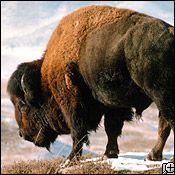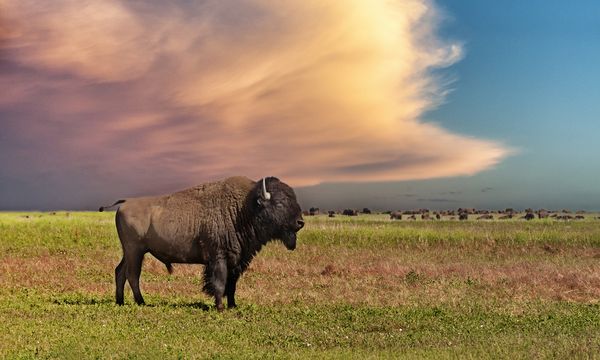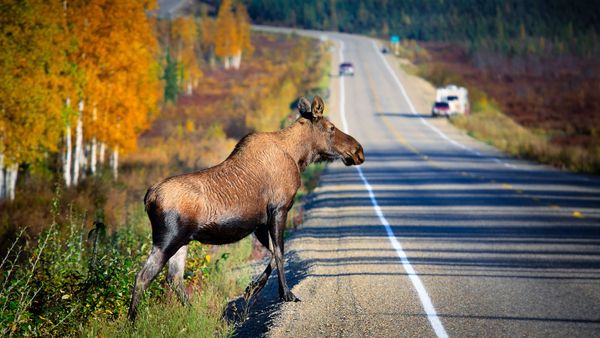In an 1887 census, the once countless plains bison (Bison bison bison) were reduced to 541 individuals by overhunting. Since then, conservation efforts have reestablished this subspecies in Oklahoma and Montana.
The other subspecies, the wood bison (B. bison athabascae), is listed as endangered.
Advertisement
These bovids graze in large herds, preferably on mixed-grass and short-grass prairie.
American bison are the largest land mammals native to the western hemisphere, although the females are much smaller than the males.
Both sexes have horns.
During the breeding season, the males fight over access to the females.
Bison share several bacterial infectious diseases with cattle that some ranchers fear may be transmittable to livestock, although studies suggest this is unlikely.
Advertisement


